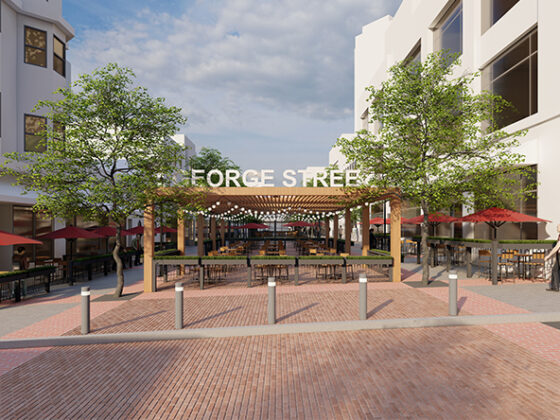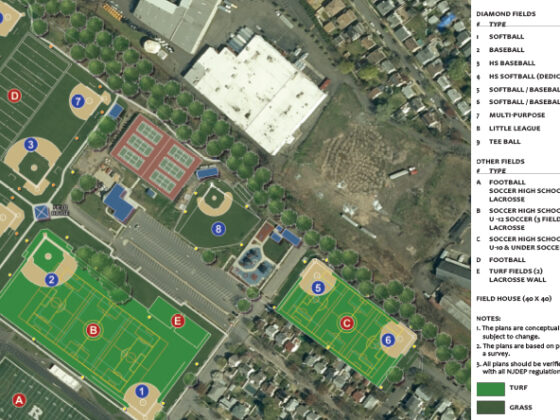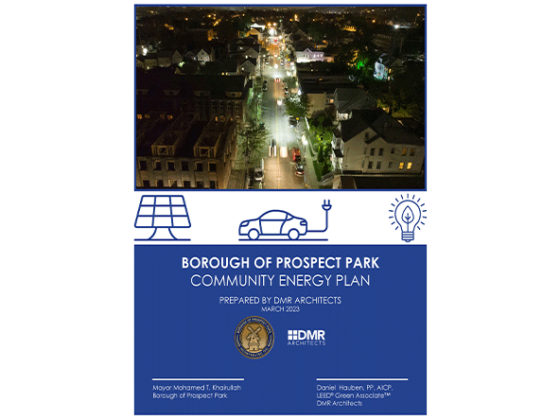By John Labrosse, Mayor, Hackensack and Francis Reiner
The City of Hackensack is in the midst of a renaissance. Over the past ten years, under the leadership of Mayor John Labrosse, Jr., the City has taken tremendous steps with the adoption and realization of a comprehensive plan which provides a clear vision for the transformation of the downtown into a mixed use, pedestrian friendly environment. Fran Reiner, Partner at DMR Architects which has been the City’s redevelopment and planning consultant since 2010, worked with Mayor Labrosse and the city’s leadership team under its Director of Redevelopment Albert Dib to author the 2012 Downtown Rehabilitation Plan which implemented the strategies for the City’s rebirth.
A key component to the success of the plan has been the public outreach through on-going meetings as well as symposiums to the engage the community, developers, contracted partners, civic leaders and key stakeholders in an on-going conversation regarding the City’s goals and objectives.
Timely results
In only a short period of time since the adoption of the plan, the City has already begun to see the benefits of these strategies. Deputy Mayor Kathleen Canestrino’s work over the past six years with developers to reinvent blighted properties through the adoption of PILOT programs, resulting in more than 2,500 units are under construction within and surrounding the Main Street downtown district. It has been a catalyst for a wave of additional development and improvements within the downtown including the completion of a supermarket, the renovation of a farmers’ market, the opening of the Performing Arts Center and the Atlantic Street Park.
The comprehensiveness strategy has allowed the City to be proactive in its approach to redevelopment and set itself up to attract and support future development.
The Plan, which was adopted in 2012, promotes:
- Smart growth principles by creating zoning which increases development flexibility, reduces parking ratios and promotes mixed-use, pedestrian friendly development in the downtown;
- The creation of public parks, plazas and open spaces with an emphasis on community gathering and includes the construction of a performing arts and community center;
- Connectivity to existing public infrastructure, including the two NJ Transit Rail Stations, the NJ Transit Regional Bus Station and Routes 4, 17, 46, Interstate 80 and the Garden State Parkway;
- A mixture of uses with a variety of residential housing options to encourage walkability and active streetscapes;
- Redevelopment and rehabilitation through architectural, neighborhood design standards that ensure high quality development;
- The implementation of a two-way street system; and
- Strategies which include municipal tools and mechanisms to promote revitalization.
At the heart of the plan are projects to revive the Main Street area into the nexus of this livable, walkable downtown district. Clear pedestrian and vehicular circulation and ample convenient parking are vital to attracting developers and ultimately residents and businesses. Hackensack is in the process of converting Main and State Streets back to two-way and completing a comprehensive streetscape installation which includes traffic signals, new sidewalks and curbs, and handicap ramps which create a safe environment for pedestrians and drivers within the downtown.
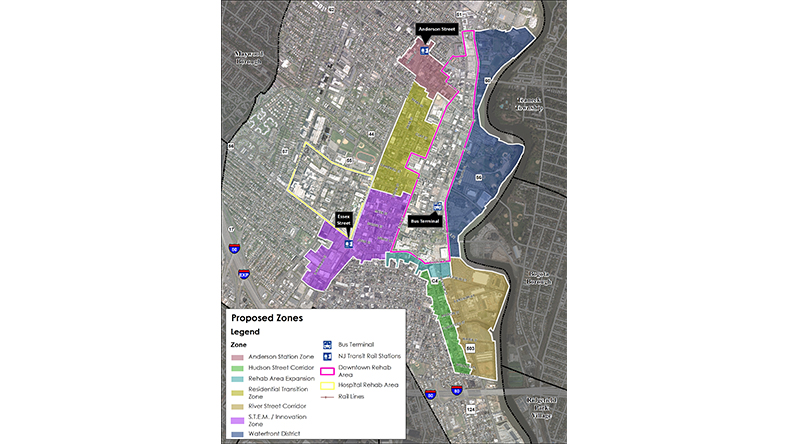
In 2020, the City completed a Master Plan which outlines the City’s goals and objectives over the next 10 years. The plan outlines a strategy for job growth and business development to support the revitalization efforts within the downtown. These strategies include the creation of a life science zone located between the downtown and the Hackensack Meridian Health campus. The plan seeks to promote lower density housing options between the downtown and the hospital with a new townhome district for empty nesters and retirees looking to downsize but stay in the City. In addition, the City recently adopted overlay zones that require the inclusion of affordable housing as a proactive approach for the pending fourth round affordable housing requirements that are scheduled for 2025.
Green priorities
Hackensack made the creation of open green spaces a priority, with all development projects requiring public plazas, parks, and walking trails to connect them to the rest of the city. In 2011, one of Hackensack’s first redevelopment projects was the conversion of an existing parking lot into Atlantic Street Park funded by a $265,000 Bergen County Open Air Grant. Its benches and outdoor covered areas bring people out of their offices at lunchtime, and its outdoor performing area supports cultural entertainment throughout warmer months.
The plan has also attracted projects to expand the walkable downtown area. The Record Site at the east end of the city, dormant for more than a decade, is in the early stages of a redevelopment plan that will bring 700 new rental apartments and 30,000 square feet of retail with green spaces interspersed throughout the nearly 17-acre community and—most-notably—connect Main Street for the first time with a newly created Hackensack Riverfront District. There are also plans for a schematic design through construction documentation for a proposed sports facility and boat launch. In the center of the downtown, there are plans to turn an area near Main Street into a public park with a pedestrian paseo that will be closed on weeknights and weekends for festivals and community events, creating a significant public park.
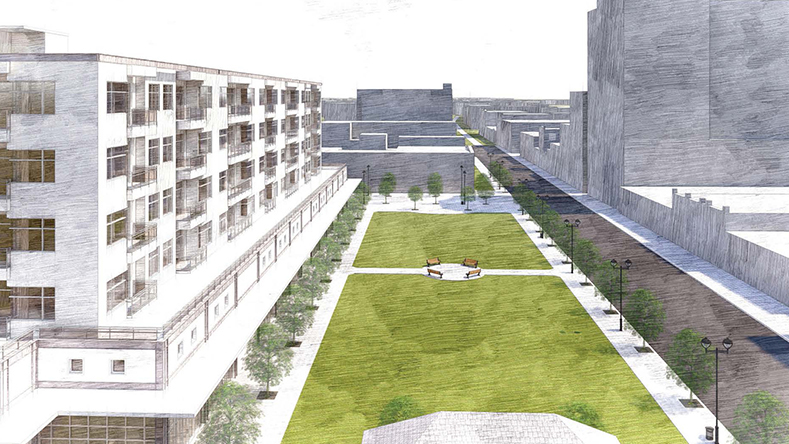
Performing arts and entertainment
Cultural, performing and culinary are vital for economic sustainability in any municipality. Hackensack converted a Masonic Temple adjacent to Atlantic Street Park into a 225-seat performing arts space for performances that range from singer Marc Cohn and Defining Moments Theater Company’s In the Heights and The 25th Annual Spelling Bee as well as local performances like Cabaret by the Hackensack High School Drama Club and Still/Moving a dance performance by local choreographers Bergen Dance Makers.
While outdoor space and entertainment options are good for the soul, providing opportunities for community sports and fitness and gathering are just as important for attracting new and keeping long-term residents. The city invested in its senior center as well as upgrading the existing 8,000 square feet and an additional 14,000 square feet at its M&M Recreation Center into a basketball arena that is also used for volleyball and baseball hitting cages, indoor soccer, and a new senior center.
The 2012 redevelopment plan provided a blueprint for Hackensack and developers to work together to meet their shared goals and set the city up to continue its growth trajectory. The city recently completed the Hackensack Life Science Zone Assessment Report to identify Federal Opportunity Zones, a designation that will attract new private investment and job creation.
The key for Hackensack and for any municipality that is seeking to revitalize its downtown or Main Street area is to be proactive in its approach to revitalization. It’s crucial for municipalities to first understand the goals and objectives of the community and its residents through an inclusive public outreach process and then to develop a comprehensive plan that will guide all future decisions, an approach that has allowed Hackensack to dictate the type and pattern of development that appeals to residents who are new to the city as well as those who are life-long residents.



